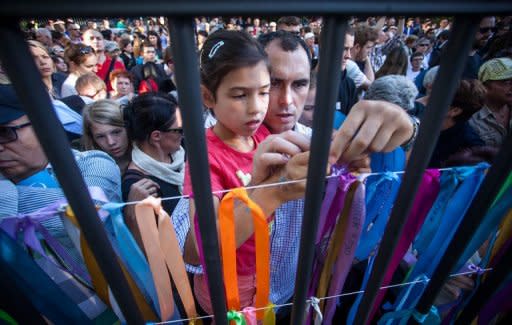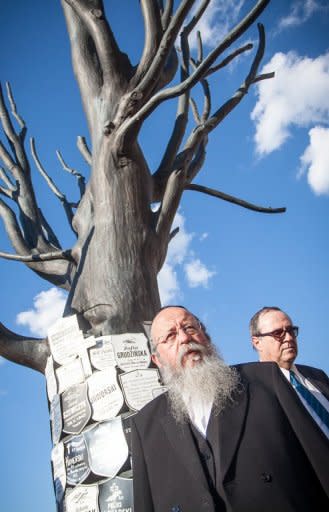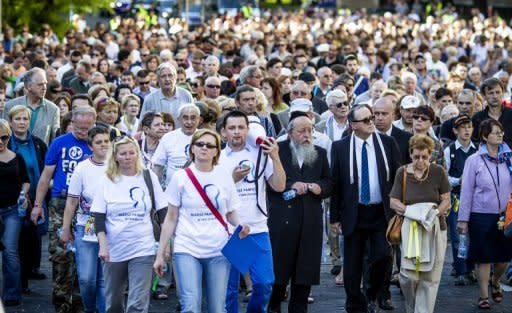Warsaw marks Nazis' 1942 Jewish ghetto deportation
Poland on Sunday marked the 70th anniversary of the start of Nazi Germany's mass deportation of Jews from the Warsaw ghetto to the death camp of Treblinka, one of the darkest episodes of the Holocaust. Several thousand people took part in a memorial march in the Polish capital to pay tribute to the victims of an operation launched on July 22, 1942 that was to claim the lives of 260,000 members of Warsaw's Jewish community. "It's a date as important as the start of the ghetto uprising on April 19, 1943. It's a date for remembering those who were sent to their deaths, almost the entire Jewish population of the city," Andrzej Zozula, a senior Jewish community leader, told AFP. Alongside Polish and Israeli officials were ordinary Warsaw residents. "We have a duty to be here so that no-one forgets. The generation that survived the war is passing, so it's up to up to remember what happened," said Krystyna Bratkowska, a publisher. Earlier Sunday, officials unveiled a sombre exhibition of unpublished period drawings of life behind the ghetto's walls, including Germans rounding up Jews, a man pulling his wife's dead body on a handcart, and a 10-year-old surrounded by guards. Placed among the drawings was a 140-gramme (five-ounce) hunk of black bread -- the daily ration in the ghetto. Pre-war Poland was a Jewish heartland, with a centuries-old community numbering some 3.2 million, or around 10 percent of the country's population. Polish Jews made up half of the Holocaust's six million victims. After invading in September 1939, Nazi Germany moved to isolate Jews in ghettos before beginning systematic killing. Warsaw's 400,000-strong Jewish community was already the largest in pre-war Europe, and the ghetto's population rose to half a million as the Nazis forced in Jews from other towns. In November 1940 they walled off a four-square-kilometre (1.5 square miles) area of the city, mostly around its traditional Jewish quarter. About 100,000 people were to die inside from starvation, disease or summary execution, with exploitation in the Nazis' war economy one of the few ways to survive. On July 22, 1942 the Nazis ordered ghetto dwellers without special work permits to assemble at the "Umschlagplatz" rail-head, on pain of being shot. From there, they were sent in trains to Treblinka, 100 kilometres (60 miles) northeast of the capital. Commemoration organisers paid particular tribute to pediatrician and children's rights campaigner Janusz Korczak and the 200 children from his ghetto orphanage. In a highly-symbolic move, a march retraced the route of Korczak and his young charges in reverse from "Umschlagplatz" (transfer site) to the orphanage that now bears his name. "The fact that we're treading this route backwards is a symbol of the hope that what took place here will never happen again," said Mateusz Majman, 25. Participants hung hundreds of coloured ribbons from the orphanage gates with the names of Jewish children murdered in the Holocaust. The deportation was part of "Operation Reinhardt", launched in October 1941 to empty the ghettos of occupied Poland. Over two years it claimed two million lives, in Treblinka as well as Belzec, Sobibor and Majdanek. When the three-month Warsaw operation was complete, the ghetto was reduced to a rump of less than one square kilometre (half a square mile), with a registered 35,000 Jews and 25,000 others in hiding. On April 19, 1943, as the Germans moved to kill those who remained, hundreds of poorly-armed Jews rose up in Europe's first urban anti-Nazi revolt. They held out for three weeks, before the survivors were killed on site or deported. A year later, the Nazis crushed a two-month uprising in Warsaw by the Polish underground in which 200,000 died, mostly civilians.





